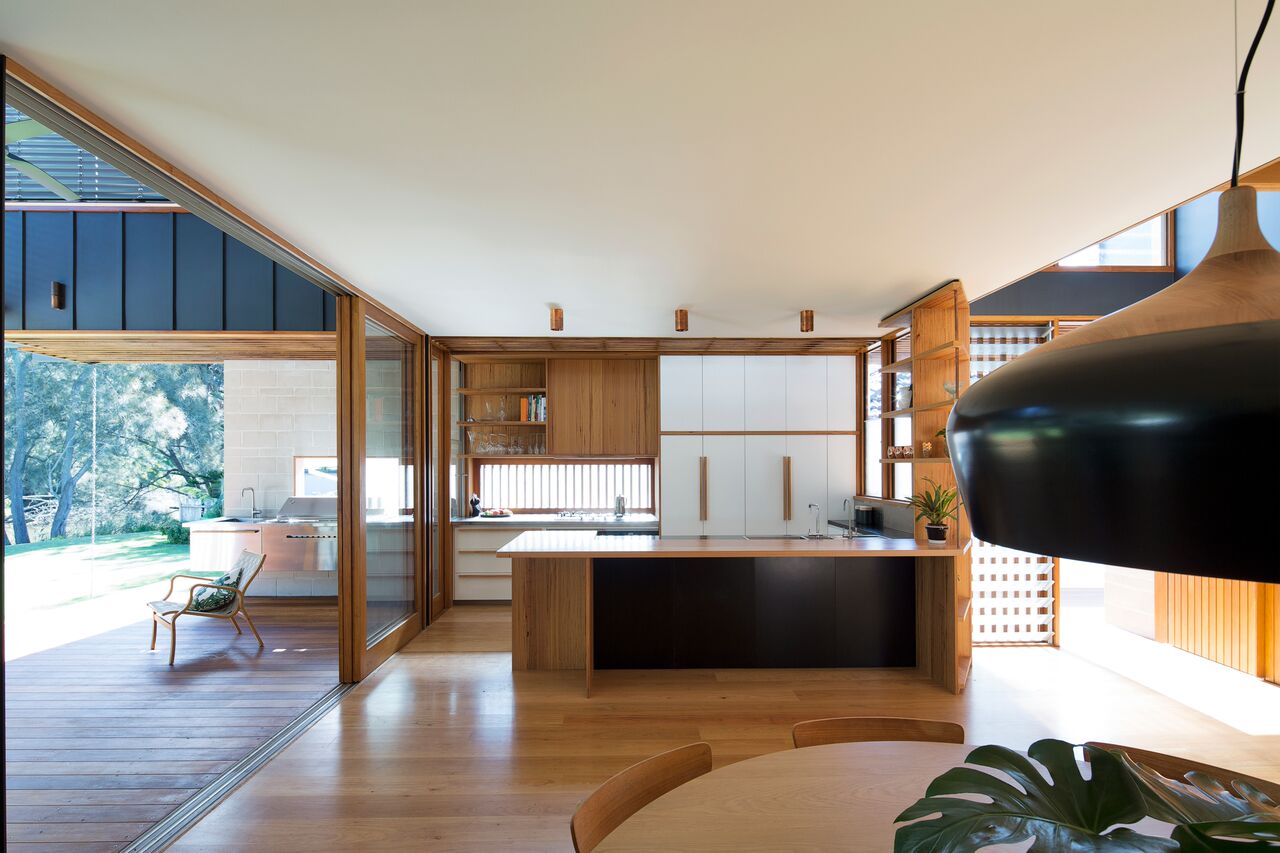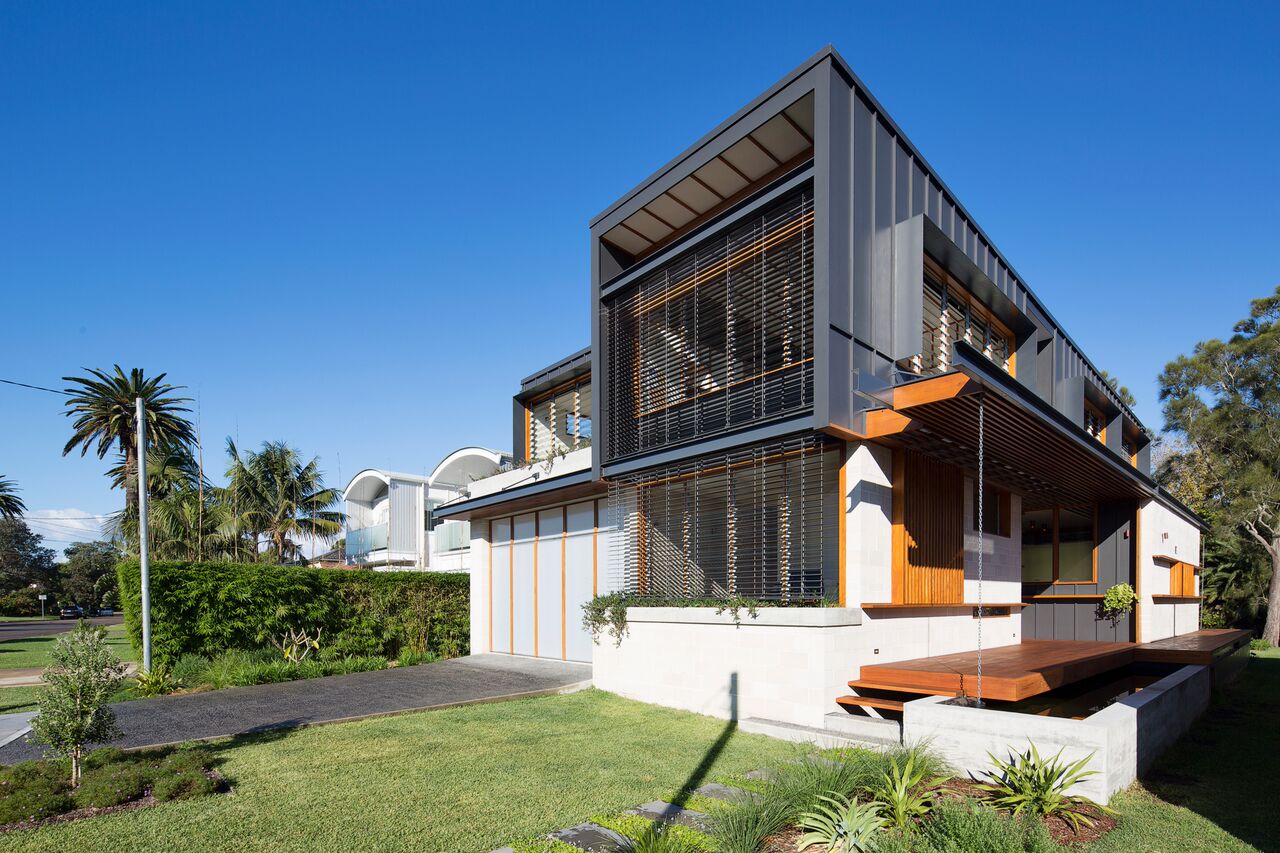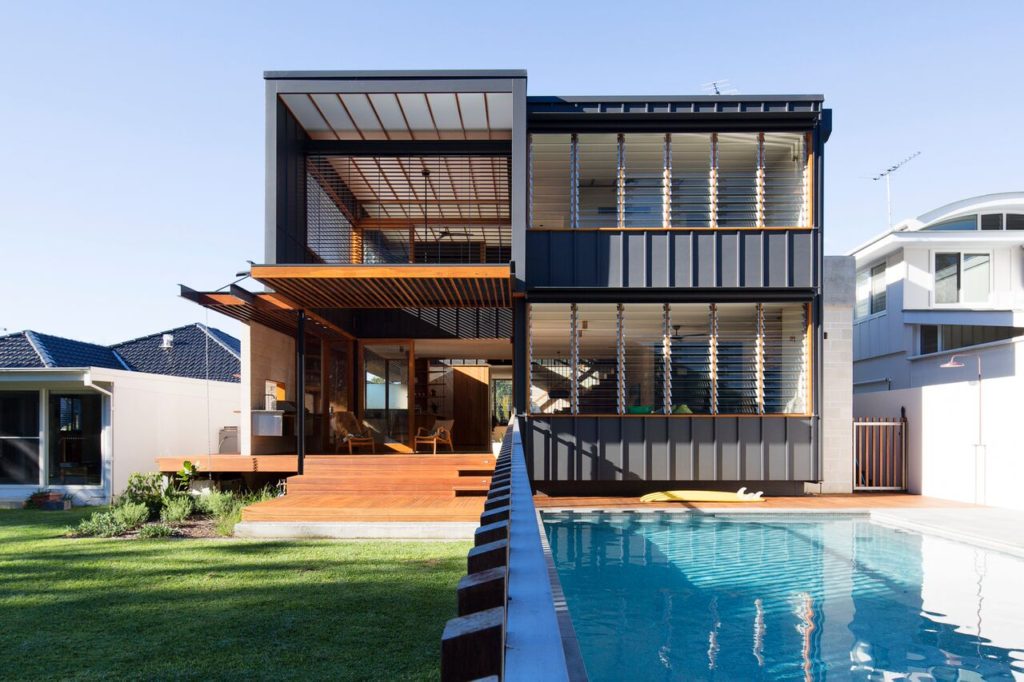Lawson and Lovell have added yet another award to their expanding belt of awards. The architectural building services based on Sydney’s Northern Beaches, took home the HIA Greensmart Sustainable Home Award for 2017 for the outstanding Rivierview Parade home in North Manly.
Lawson and Lovell won the HIA NSW Region award in 2016 for Custom Built Home $1m-$2.5m. The talented team were also finalists in the $600L-$1M category in 2016.
In September, John Lawson and Phillip Lovell won the Master Builders Excellence in Housing award for a Queenscliff house in the $801,000 to $1 million category. The architect, Matt Elkan, worked closely with the owners from concept stage to completion.
 Lawson and Lovell followed a brief to provide a home that suits the busy lifestyle of a family with two children. On level 1 there are three large bedrooms, a large sitting room overlooking the river and each child’s room was designed with a dedicated study area and built-in robe. The main bedroom has an ensuite and walk-in robe.
Lawson and Lovell followed a brief to provide a home that suits the busy lifestyle of a family with two children. On level 1 there are three large bedrooms, a large sitting room overlooking the river and each child’s room was designed with a dedicated study area and built-in robe. The main bedroom has an ensuite and walk-in robe.
A clever separation of the children’s rooms from the master bedroom is via an internal deck that allows light from the windows above and next to the void to filter through to the living room downstairs, providing a fluid transition of light.
On the ground floor there is an open plan living area and main kitchen with Miele appliances, together with dining area featuring a coco flip pendant light. There is also a home office, laundry, guest bedroom and covered back deck with BBQ and operable louvers to control the level of sunlight depending on the season. There is an extensive garden with swimming pool and fish pond.
 The windows are all timber with some of the ground floor windows having a sliding privacy screen/fly screen that enables the operation of opening both privacy screen and window to fully allow the merging of inside and out.
The windows are all timber with some of the ground floor windows having a sliding privacy screen/fly screen that enables the operation of opening both privacy screen and window to fully allow the merging of inside and out.
The property is located in a flood zone and had to be designed to be built above this zone. The foundation is on loose sand and required 70 screw piles to be driven approximately 17 meters deep to reach stable foundation. Footings on the piles span between to support face Boral Alabaster block work on the ground floor.
The top level was built with structural steel and timber frames, CSR plaster board and insulated walls. There is also a suspended concrete planter that runs across the front and down the side of the house. This was finished with board mark formwork so that the texture of the timberwork runs horizontally across the face of the finished concrete. This continues internally and provides two concrete formed bathtubs that are tiled with mosaic tiles.
 On the façade of the home, easy lapped primed panel cladding by James Hardie was used on the top floor of the house with 30×30 battens to conceal the joints. Internally the floors have Tallowwood decking boards and Tallowwood flooring. The external decking is also Tallowwood.
On the façade of the home, easy lapped primed panel cladding by James Hardie was used on the top floor of the house with 30×30 battens to conceal the joints. Internally the floors have Tallowwood decking boards and Tallowwood flooring. The external decking is also Tallowwood.
Clever use of structural steel hides the stack of external venetians. The use of the venetians and external roller blinds gives privacy but is also adjustable to enable control of sunlight entering the room.
There is also solar PV on the roof to supply power. Solar panels also provide heating for the pool. Air conditioning is located in the joinery of the bedroom’s and sitting room upstairs, and there is under tile heating in the bathrooms and laundry.
Hydraulics on this project comprised of 2x 2000 litre rainwater tank which enables water to be reused in the laundry and for irrigation.
The main challenge in construction was the excavation of the pool. Being so close to the tidal river at the rear of the property, we could not dig below the water table. The site was classified as class 4 acid sulphate soil risk, so caution was required during excavation not to expose this level. When providing the screw piles, we also found that the allowable bearing pressure was much deeper than expected, requiring us to bore to approximately 17meters. – Phil Lovell




